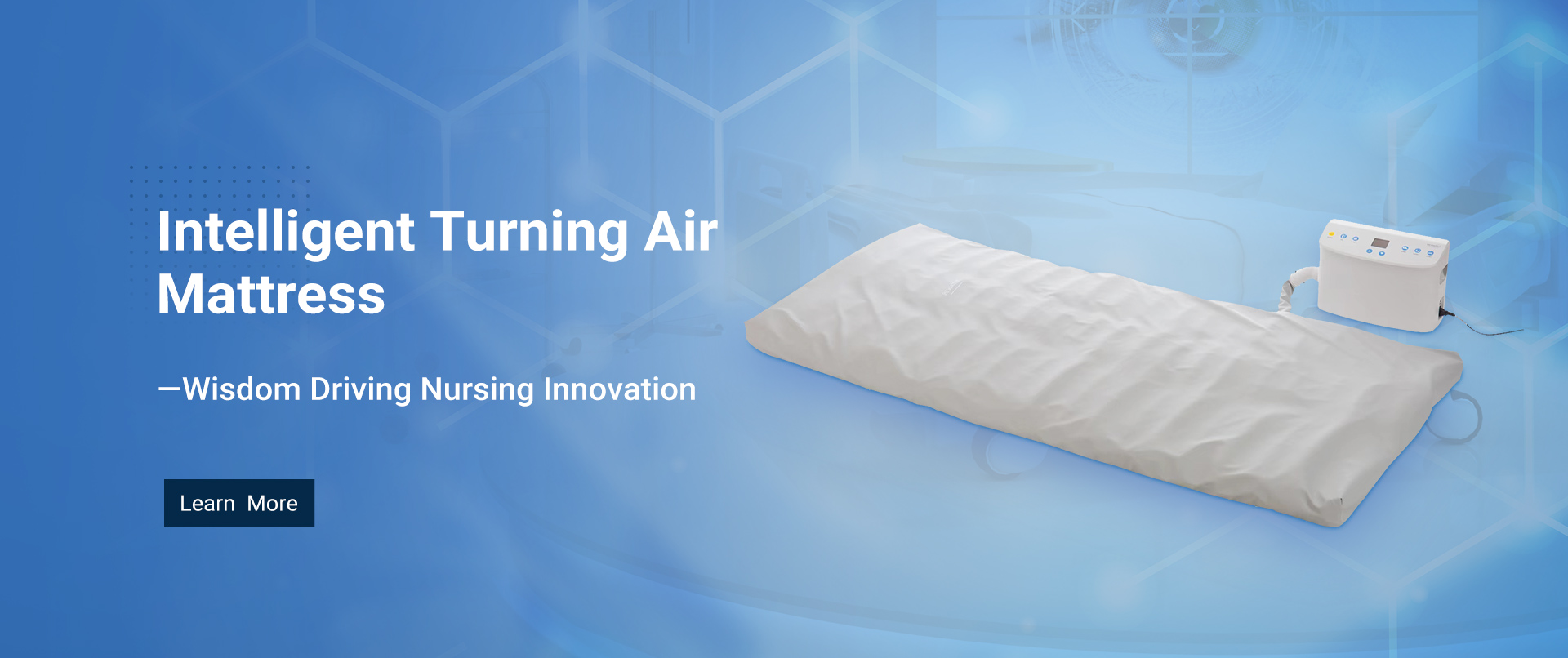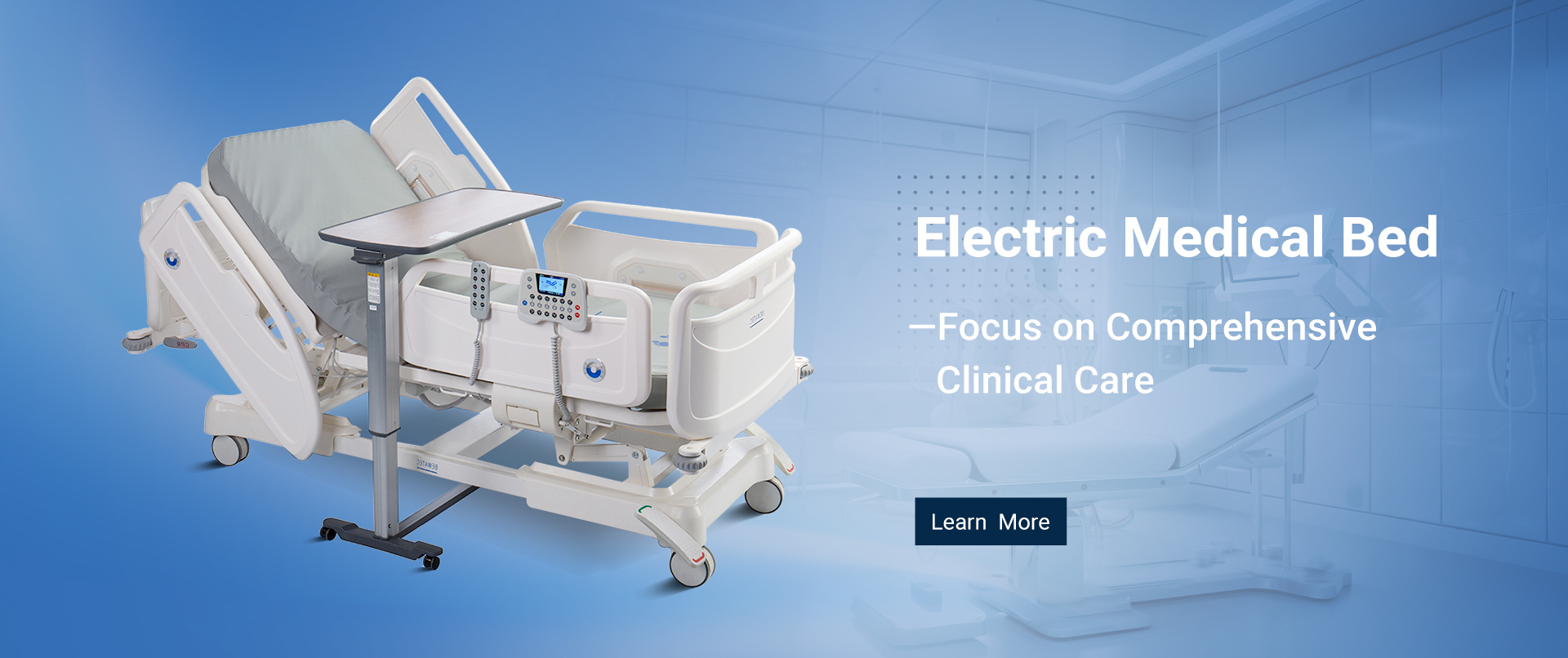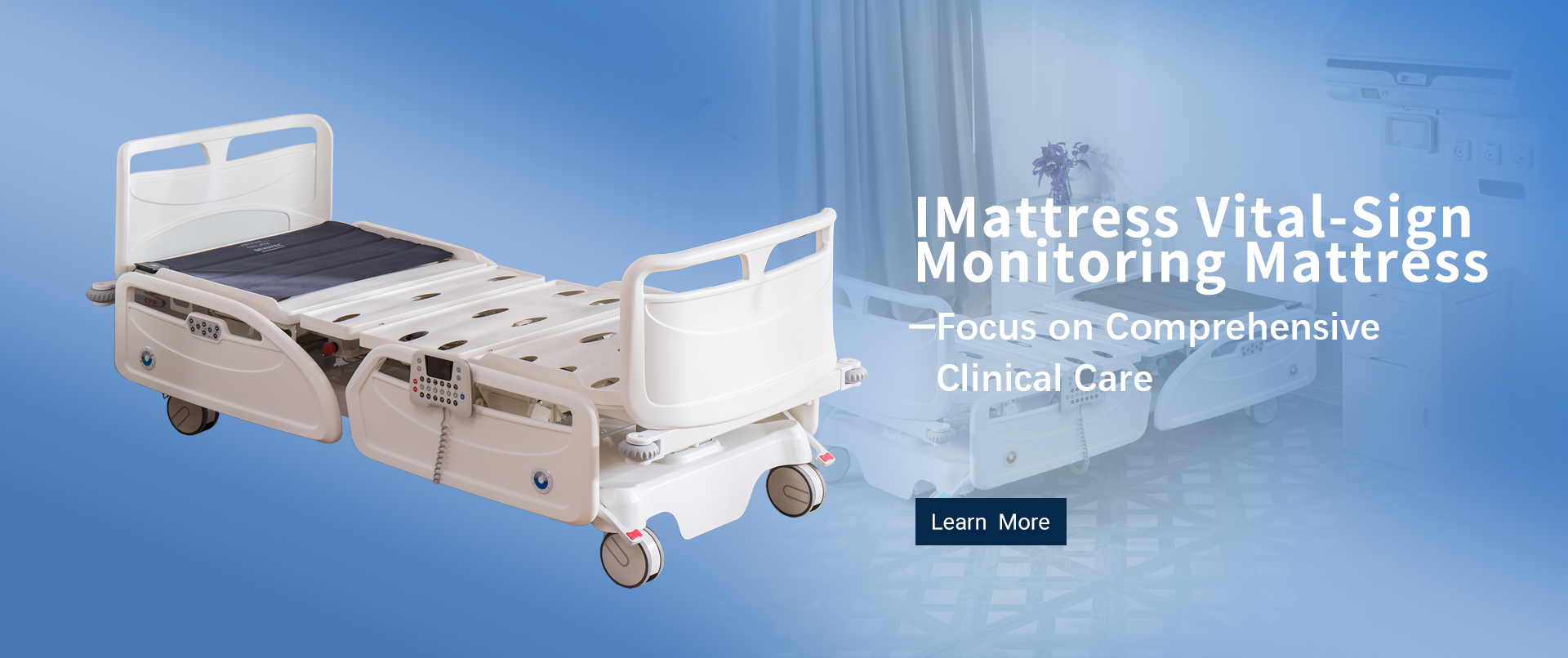
The Ultimate Guide to Choosing the Right Wifi Connected Vital Signs Monitor for Your Needs
Table of Contents
- Understanding the Importance of Wifi Connected Vital Signs Monitors
- Key Features to Look for When Selecting a Vital Signs Monitor
- Assessing Your Specific Needs: Home vs. Professional Use
- Comparing Different Wifi Connected Models on the Market
- Budget Considerations: Finding Quality Monitors Within Your Price Range
- User-Friendly Interface: Importance of Ease of Use in Vital Signs Monitors
- Enhancing Patient Care: The Role of iMattress Vital-Sign Monitoring Mattress in Modern Healthcare
- FAQS
- Conclusion
- Related Posts
In today’s world, where tech really dents the way healthcare works, picking the right Wifi-connected vital signs monitor is pretty important—not just for doctors and nurses, but for patients too. As everyone’s talking more about smart medical care these days, Bewatec (Zhejiang) Medical Device Co., Ltd. is really leading the charge in this space. They’re all about coming up with innovative solutions that make patient safety and comfort a top priority. We're committed to helping push healthcare into a more digital future around the globe, making sure patients get care that's tailored just for them.

This guide is here to give you the inside scoop—so you can pick the best Wifi-connected vital signs monitor for your needs. We’ll go over the key features, the benefits, and things to think about, so you’ve got the info to make smarter choices and stay on top of vital sign management in this connected world.
Understanding the Importance of Wifi Connected Vital Signs Monitors
In today’s fast-changing healthcare world, you really can't overstate how important
WiFi-connected vital signs monitors are. These gadgets do more than just make patient tracking easier—they actually improve the
accuracy and accessibility of the data we rely on. I recently came across a report saying that the global market
for connected health devices is expected to hit a whopping $612 billion by 2025, mostly because more and more people want remote monitoring options.
It’s pretty clear we’re moving towards a more proactive approach, where healthcare providers can keep an eye on vital signs in real time, which ultimately means
better outcomes for patients.
As tech keeps advancing, blending IoT and smart sensing features becomes vital. Moving away from just basic identification systems to more active sensing setups allows healthcare workers to easily monitor a bunch of different vital signs. This trend matches the whole idea of creating
“smart spaces” in medical environments—places that can monitor and respond to patient needs more efficiently. Thanks to WiFi, these monitors give instant access to patient info and help healthcare teams act faster and more effectively, making patient care not just easier but
smarter overall.
Key Features to Look for When Selecting a Vital Signs Monitor
 When you're on the hunt for a Wi-Fi-enabled vital signs monitor, it's really important to think about the features that actually matter to you. First off, you want to make sure it’s accurate—these days, some of the smarter devices even use AI to predict issues like low blood pressure before they become serious, which can help you or your doctor act faster. Ease of use is a big deal, too. Luckily, a lot of these monitors now come with simple interfaces and can connect easily to your smartphone, so keeping tabs on your vital signs feels pretty effortless—like checking an app instead of wrestling with complicated equipment.
When you're on the hunt for a Wi-Fi-enabled vital signs monitor, it's really important to think about the features that actually matter to you. First off, you want to make sure it’s accurate—these days, some of the smarter devices even use AI to predict issues like low blood pressure before they become serious, which can help you or your doctor act faster. Ease of use is a big deal, too. Luckily, a lot of these monitors now come with simple interfaces and can connect easily to your smartphone, so keeping tabs on your vital signs feels pretty effortless—like checking an app instead of wrestling with complicated equipment.
Oh, and don’t forget to verify that the device is trustworthy. Look for certifications like FDA approval or similar credentials—they’re basically a stamp of safety and quality. Connectivity options are also key; picking a monitor that syncs with multiple health apps or stores data in the cloud can really simplify tracking over time.
Another thing to keep in mind is how many vital signs the device can measure. Sure, heart rate and blood pressure are basic, but some gadgets go the extra mile by also tracking oxygen saturation and temperature. That’s super useful when you’re trying to get a complete picture of your health. With more focus on early detection and proactive care these days, investing in a device that offers comprehensive monitoring tailored to your needs can truly make a difference—especially if you’re managing chronic issues or just want to stay on top of your health overall.
Assessing Your Specific Needs: Home vs. Professional Use
Choosing a Wi-Fi-enabled vital signs monitor really depends on where you're planning to use it. If it’s for home, most folks tend to prioritize something simple and easy to handle. You want a device with an intuitive interface, maybe a user-friendly app, and features that make tracking stuff like your heart rate or blood pressure a breeze. It’s also pretty handy if it offers mobile notifications—you know, so you can stay on top of your health without constantly fussing with the device. These kinds of monitors can be such lifesavers when you're managing a chronic condition or just keeping an eye on loved ones.
Now, in a professional setting—think hospitals or clinics—the game changes a bit. Here, accuracy and dependability are everything. You’re looking for monitors that can connect smoothly with existing medical systems. Multi-parameter tracking, super precise sensors, and comprehensive data logging are all a must. Plus, they need to meet regulatory standards and play nicely with electronic health records. That way, healthcare providers can work more efficiently and, in the end, help patients better. Knowing these differences really helps in picking the right monitor for whatever environment you’re in, ensuring you get a device that actually fits your needs and does the job well.
The Ultimate Guide to Choosing the Right Wifi Connected Vital Signs Monitor
This chart compares the key vital signs monitored by typical wireless devices for home and professional use. The data highlights the average accuracy of common devices in assessing heart rate, blood pressure, temperature, and oxygen saturation.
Comparing Different Wifi Connected Models on the Market
So, if you're trying to choose a WiFi-enabled vital signs monitor, it’s pretty important to get a good sense of the different models out there. I came across some recent industry reports that project the global market for remote patient monitoring devices to hit around $2.2 billion by 2025. And honestly, WiFi-connected devices are catching on pretty fast—people love how convenient and efficient they are. These monitors let healthcare providers share data seamlessly, so they can keep an eye on patients’ vital signs in real time. That’s a huge plus because it means quicker interventions when needed.
When you’re comparing different WiFi monitors, it’s a good idea to think about what exactly you need. Some models focus on specific things like heart rate variability or oxygen saturation, while others offer a full package with multiple parameters. A 2023 survey by the Medical Device Innovation Consortium mentioned that more than 60% of healthcare pros prefer devices that are easy to use, with customizable alerts. That kind of feedback is super helpful because it can make a real difference in how smoothly things run—both for clinicians and for patient care.
Another thing to keep in mind is how well these monitors fit into existing health systems. A report from Grand View Research pointed out that over 45% of people are more willing to use digital health tech if it integrates easily with their healthcare provider’s platforms. So, when you're shopping around, it’s smart to check out how compatible the device is with telehealth systems and whether it’s supported by the platforms you already use. Basically, making sure everything fits together nicely can save a lot of headaches down the line.

Budget Considerations: Finding Quality Monitors Within Your Price Range
When you're on the lookout for a Wi-Fi-enabled vital signs monitor, one of the big things to keep in mind is your budget. Honestly, with so many options out there, it’s easy to get overwhelmed. So, it helps to figure out what features really matter to you—stuff like real-time alerts, data storage, or just the basics—and what you’re okay with skipping. Set a realistic budget and prioritize those must-have features; this way, you won’t end up spending more than you intended.
**Tip 1:** Take some time to research and compare a few brands and models that fit within your price range. Honestly, reading reviews from other folks who’ve used the same kind of monitor can be super helpful—they often point out pros and cons you might not have thought about. Also, look for options that come with warranties or satisfaction guarantees; it’s nice to know your investment is protected just in case.
**Tip 2:** Don’t forget to check out the customer support and after-sales service. A monitor might tick all your boxes price-wise, but if support is lacking, troubleshooting could turn into a real headache. Brands that offer good online resources, manuals, and quick customer support tend to make life a lot easier.
By paying close attention to your budget and the features that really matter to you, you'll be in a much better spot to find a quality Wi-Fi vital signs monitor that fits your needs without blowing your budget.
User-Friendly Interface: Importance of Ease of Use in Vital Signs Monitors
When you're choosing a WiFi-connected vital signs monitor, one of the most important things to look for is how
user-friendly it is. Honestly, a device with an intuitive and easy-to-navigate design makes all the difference—whether you're a healthcare pro
or just someone keeping an eye on their health from home. If it’s simple to use, you're more likely to actually stay engaged with it, because
let’s face it, nobody wants to wrestle with complicated tech every time they check their stats. A clear layout, straightforward menus, and quick
access to features help users understand how to operate the device, read their results, and use any extra options without scratching their heads.
Plus, having a monitor that’s easy to use can really speed up decision-making. Things like
real-time data displayed clearly, simple alerts for any abnormal numbers,
and smooth integration with your mobile so you can share info easily—these all add up to a smoother, more efficient healthcare experience.
This is especially true in emergencies, where quick responses can seriously make a difference. So, it’s pretty much a no-brainer:
picking a monitor that’s simple to handle isn’t just about user satisfaction, it’s also about making sure you can manage health
issues effectively and react fast when it counts.
Enhancing Patient Care: The Role of iMattress Vital-Sign Monitoring Mattress in Modern Healthcare
In modern healthcare, the integration of advanced technology into patient care is transforming the way health professionals monitor vital signs. One remarkable innovation is the iMattress Vital-Sign Monitoring Mattress, which not only provides comfort but also enhances the efficiency of patient monitoring. The FOM-BM-IB-HR-R model specifications highlight its practicality with dimensions of 836 (±5) × 574 (±5) × 9 (±2) mm, making it an ideal choice for various healthcare settings.
The iMattress integrates vital sign monitoring seamlessly into the patient's sleeping space, allowing continuous observation of essential health metrics. This unobtrusive method alleviates the discomfort associated with traditional monitoring devices, promoting better rest and recovery for patients. With the potential for real-time data collection and analysis, healthcare providers can make informed decisions swiftly, ultimately leading to improved patient outcomes.
Moreover, the sleek design and functionality of the FOM-BM-IB-HR-R mattress ensure that it fits effortlessly into the existing healthcare infrastructure. As hospitals and clinics strive for more patient-centered care solutions, the iMattress stands out as a pivotal tool for enhancing the quality of medical attention through innovative technology, effectively bridging the gap between comfort and critical health monitoring.
FAQS
: When selecting a vital signs monitor, prioritize accuracy, ease of use, connectivity options, and the range of vital signs tracked. Look for devices that utilize AI technology for health predictions and have user-friendly interfaces.
Accuracy is crucial as it allows for timely medical intervention by predicting health issues like hypotension, which can significantly impact patient safety and treatment outcomes.
Always check for certifications such as FDA approval or similar credentials to ensure the device meets safety and efficacy standards.
Connectivity options are important for syncing with multiple health apps or enabling cloud storage, which simplifies data management and enhances monitoring capabilities.
Look for monitors that track vital signs beyond just heart rate and blood pressure, such as oxygen saturation and temperature, for a more holistic view of health.
Home monitors prioritize simplicity and ease of use, while professional monitors require accuracy, multi-parameter tracking, and compliance with medical standards for effective healthcare delivery.
Mobile notifications can help users stay informed about their health, making it easier to manage chronic conditions and monitor the well-being of family members.
Essential features for professional use include high-precision sensors, multi-parameter monitoring, extensive data logging, and compatibility with electronic health records to improve workflow and patient care.
Assess whether the monitor will be used at home or in a professional setting, and consider factors like simplicity, integration capabilities, accuracy, and the specific vital signs you need to track.
Investing in a comprehensive monitoring solution tailored to individual health conditions can significantly enhance chronic illness management and overall well-being.
Conclusion
In today’s world of healthcare, picking the right Wifi-connected vital signs monitor isn’t just a technical choice — it’s a pretty important one when it comes to providing truly good patient care. These gadgets do more than just keep an eye on vital signs in real-time; they also make patients feel more comfortable and safer, which lines up perfectly with the tech-driven goals of companies like Bewatec (Zhejiang) Medical Device Co., Ltd. When you're trying to decide on a monitor, it’s helpful to get what features really matter, whether you’re using it at home or in a professional setting. The device should support your specific wellness goals without making things more complicated.
Let’s be honest — budget always matters, right? Finding a quality monitor that won’t break the bank is key. Thankfully, there are lots of options out there, so you don’t have to sacrifice quality for a better price. Plus, a simple, user-friendly interface makes all the difference — it helps both healthcare pros and everyday folks to use these devices easily and confidently. By exploring the different Wifi-connected models out there and thinking about what you really need, you’ll be in a much better position to make a smart choice — one that actually helps improve health outcomes in the long run.
Related Posts
-

Navigating the Future of Best Medical Beds Manufacturers in 2025 with Technological Innovations Guide
-
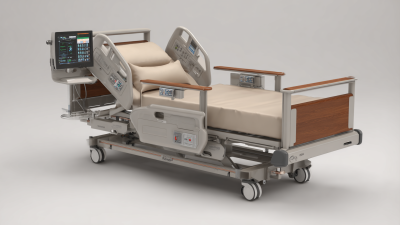
Mastering the Use of Automatic Medical Beds: A Comprehensive Guide to Enhanced Patient Care
-
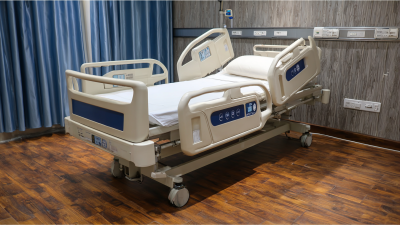
7 Compelling Reasons to Choose a Patient Bed With Mattress for Optimal Comfort
-
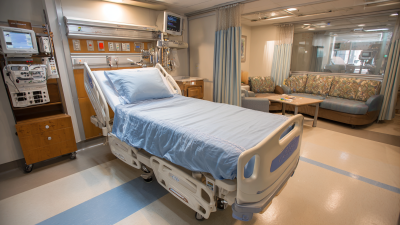
Essential Hospital Bed Equipment Checklist for Optimal Patient Care and Safety
-
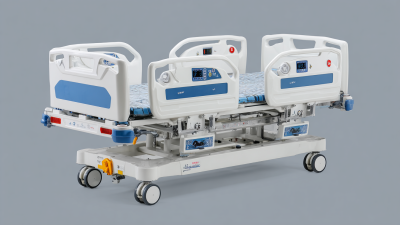
Essential Checklist for Choosing the Right Medical Bed Manufacturers for Your Facility
-

Elevating Global Healthcare: Why 'Best China Factory Wholesale Hospital Bed' Sets New Quality Standards
Blog Tags:


